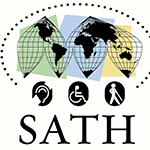
Discover how to optimize your business performance and profitability by effectively managing costs through waste reduction, operational efficiency, and technology utilization.

Cost Structure
12 questions for business value discovery and prioritization.
Key to Success
In this section, we would like to make sure that Small and Medium-sized Tourism Enterprises (SMTEs) should be aware of the following:
- The different types of costs that businesses and destinations can incur, such as fixed, variable, and operational, and understand how these costs can impact business performance and profitability.
- The importance of cost management in optimizing business performance and profitability includes managing costs effectively by reducing waste, improving efficiency, and streamlining operations to enhance competitiveness and profitability.
- The role of technology in cost management includes using technology to optimize cost structure, identify inefficiencies and areas for improvement, and make data-driven decisions.
Accomplishments
In this step, we’ll:
- Identify the highest costs inherent in our business.
- Highlight our fixed and variable costs.
- Find economies of scale we can leverage to reduce our costs.
Time-Saving Tools
We’ll complete all sections of this chapter more quickly if we have any of the following handy:
- Our marketing plan and strategic plan.
- The tourism destination market plan and strategic plan.
- The trade travelers and other relevant stakeholders.
- Our Pricing Strategies.
- Our financial flow.
- Our full budget.
- All documents could be applied to find relevant information.
Presentation
Cost structure refers to the various costs and expenses incurred to operate, produce and deliver products and services to travelers. Therefore, effective cost structure management is essential for Small and Medium-sized Tourism Enterprises (SMTEs) to remain competitive, profitable, and sustainable. Here are some key things Small and Medium-sized Tourism Enterprises (SMTEs) should keep in mind about cost structure:
- Identify and classify costs: Small and Medium-sized Tourism Enterprises (SMTEs) should classify their costs into fixed, variable, and semi-variable categories. Fixed costs remain constant regardless of the level of production or sales, such as rent or insurance. Variable costs, such as raw materials or labor, vary with production or sales levels. Finally, semi-variable costs have fixed and variable components, such as utilities or salaries.
- Manage costs effectively: Small and Medium-sized Tourism Enterprises (SMTEs) should optimize resource use, reduce waste and inefficiencies, and negotiate better prices with suppliers. This can help to improve profitability and competitiveness.
- Evaluate and prioritize costs: Small and Medium-sized Tourism Enterprises (SMTEs) should prioritize their costs by identifying those critical to their business operations and those that can be reduced or eliminated. This can help to allocate resources effectively and optimize profitability.
- Break-Even Analysis: Small and Medium-sized Tourism Enterprises (SMTEs) need to perform a break-even analysis to determine the level of sales they need to generate to cover their fixed and variable costs. This analysis can help them set realistic goals and make informed pricing and marketing strategy decisions.
- Monitor and review cost structure: Small and Medium-sized Tourism Enterprises (SMTEs) should monitor and review their cost structure regularly to identify trends, inefficiencies, and opportunities for improvement. This can help to make informed decisions and optimize profitability.
Overall, effective cost structure management is critical for Small and Medium-sized Tourism Enterprises (SMTEs) to remain competitive, profitable, and sustainable in the long term. SMTEs can optimize their business operations and achieve their strategic goals by identifying and classifying costs, managing them effectively, evaluating and prioritizing them, and monitoring and reviewing cost structure regularly.
GUIDING QUESTIONS
How can we promote responsible and sustainable practices throughout our cost structure? Implementing eco-friendly initiatives and supporting local communities will contribute to small tourism enterprises' long-term success and reputation within our cost structure.
YScala
A suggestion of guiding questions that are not intended to exhaust the topic:
- What are the 20% costs that account for 80% of our total expenses?
- Which processes and resources have the most significant impact on our business cost?
- What are our critical costs of sale? How do they impact our overall cost structure?
- What are our fixed costs, such as rent, utilities, salaries, and others?
- What are the most important costs inherent in our business? Which Key Resources are most expensive? Which Key Activities are most expensive?
- What Key Activities may require high costs for the business? How do our Key Activities generate costs? Do these same Key Activities correspond to the Unique Value Propositions chosen?
- What are our variable costs, such as supplies, commissions, fuel, and others?
- What type of cost impacts our overall cost structure?
- What is our cost of goods sold (COGS) for each service we provide, such as food and beverage, transportation, or guide fees? How do these costs impact our profitability?
- What economies of scale can we leverage to reduce costs and improve profitability? How can we take advantage of these economies of scale?
- What is our break-even point? How can we use this to set pricing and marketing strategies?
- Are we overlooking other costs like marketing or website development? How can we account for these costs in our overall cost structure?
By answering these questions, Small and Medium-sized Tourism Enterprises (SMTEs) can better understand their cost structure, which can help them make more informed decisions about their pricing, marketing, and investment strategies.
Let your like and recommend this post to improve your audience!
Share this post with friends, colleagues, or anyone else who might be interested.
Comments:
We invite you to engage with our community, share your perspectives, and contribute to this meaningful conversation by commenting below. Your experiences and ideas can help others in their sustainable tourism development management journey.













